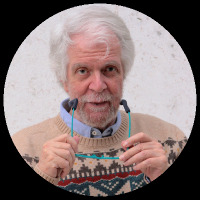Papers by Stella M . Rouse

Latino Representation and Education: Pathways to Latino Student Performance
State Politics & Policy Quarterly, 2010
The rapid growth of the Latino population in the U.S. over the past 15 years has led to a signifi... more The rapid growth of the Latino population in the U.S. over the past 15 years has led to a significant increase in levels of primary and secondary school enrollment rates of Latino children. Research on Latino education has demonstrated the institutional and contextual challenges faced by this increasingly significant group, but studies that link Latino representation and Latino educational performance have neglected to sort out the direct and indirect effects of representation on student achievement. The central assumption in these studies outlines a causal chain running from Latino political representation (school boards), to Latino bureaucratic representation (administrators and teachers), to Latino student performance. This study tests these theoretical assumptions by employing a path analytic model using data from 1,040 Texas school districts for the years 1997–2001 to tease out the direct and indirect effects of Latino representation on Latino student achievement. We find robus...
Descriptive Representation: Understanding the Impact of Identity on Substantive Representation of Group Interests
Oxford University Press eBooks, Mar 10, 2011

Political Behavior, 2022
In this paper, we examine whether women candidates are more likely to spur turnout in election ye... more In this paper, we examine whether women candidates are more likely to spur turnout in election years when gender-related issues are central to the national debate. We argue that having women on the ballot in a gendered electoral environment mobilizes specific groups of voters. Utilizing voter files in Pennsylvania and Washington for 2014 and the more gender focused 2018 election, we evaluate this potential mobilizing effect in both primary and general midterm elections. Our results show that both female and male voters were more likely to turn out in the 2018 midterm elections when a woman was on the ballot for the U.S. House of Representatives. In Pennsylvania, which tracks registrants' party affiliation, Democrats, members of third parties, and independents were particularly impacted by the presence of a female candidate. Moreover, in both states, a woman on the ballot was especially important for young people, a group that is traditionally less engaged. Utilizing a difference-indifference approach, we confirm these results are not due to the endogenous selection of where women choose to run. These findings demonstrate that the mobilizing effect of women candidates is dependent on political context.

Congress & the Presidency, 2023
In this paper, I look at how differences in committee participation help further explain the way ... more In this paper, I look at how differences in committee participation help further explain the way Latinos are represented in Congress. I examine levels of participation in four committees in the House of Representatives for the 109 th-112 th Congresses. I find that Latino committee members participate at greater levels when high Latino salient legislation is considered, but overall, they do not engage in greater committee activity, compared to non-Latino members. I also find that a higher percentage of Latinos in a district leads to greater levels of activity among committee members, especially when considering high Latino salient bills. The results show that Latinos receive substantive representation in committees via district composition, but that descriptive representation is relative and not absolute. These findings may speak to the continued lack of Latino institutional power and the tradeoffs Latino members must consider when deciding where and when to invest legislative effort. Furthermore, the results underscore the importance of institutional context in assessing the link between descriptive and substantive representation.
Economic Uncertainty, Job Threat, and the Resiliency of the Millennial Generation's Attitudes Toward Immigration*
Social Science Quarterly, 2015
ABSTRACT

Social Science Quarterly, 2006
Objective. This article explores the empirical effects of U.S. drug policy on coca cultivation in... more Objective. This article explores the empirical effects of U.S. drug policy on coca cultivation in the Central Andes. We assess the impact of U.S. military assistance on the production of coca in the Central Andes, while controlling for other explanatory variables that influence coca cultivation. Method. Using data from 1980-2001 for Colombia, Bolivia, and Peru, we perform a pooled cross-sectional time-series analysis. Results. The effects of U.S. military assistance on coca cultivation are not uniform across the Central Andes. Coca production decreased in Bolivia and Peru and increased in Colombia. Total coca production in the Central Andes, however, remained unchanged. Conclusion. This study is consistent with existing literature that points out the obstacles governments face as they attempt to suppress illicit goods. Specifically, our empirical findings support the idea of the ''balloon effect,'' whereby government efforts to ''squeeze'' illicit trade in one area result in the expansion of that trade elsewhere.

American Journal of Political Science, 2012
Although there is considerable evidence that religion influences political opinions, it is unclea... more Although there is considerable evidence that religion influences political opinions, it is unclear how this story plays out across different segments of the U.S. population. Utilizing the 2000 Religion and Politics Survey, we examine the effects of religious beliefs, behaviors, and affiliations on citizens' attitudes relating to issues of egalitarianism. Our study is one of the few to comparatively analyze the link between religious measures and political outlooks for the nation's three largest ethno-racial groups. The findings show that conservative Christianity is consistently associated with less tolerant and less egalitarian views among whites. Religious African Americans and Latinos, however, hold more equitable opinions about disadvantaged individuals. To further strengthen our arguments, we also replicate these results using the 2008 American National Election Study. Overall, we demonstrate that a single perspective on religion and public opinion does not apply to all groups. P olitical scientists have long been interested in the social and group bases of public opinion. Religious differences, in particular, lie at the heart of such examinations. Indeed, scholarship on religion and American politics has increasingly received academic atten

Media Coverage of the U.S. Supreme Court: How Do Journalists Assess the Importance of Court Decisions?
Political Communication, 2013
ABSTRACT Agenda-setting theory is central to understanding the connection between media and Ameri... more ABSTRACT Agenda-setting theory is central to understanding the connection between media and American government. Indeed, legislative and executive branches of American government are often characterized by their publicity-seeking behavior. This is not true of the judicial branch. However, the importance of media coverage is magnified for the United States Supreme Court because, lacking the public affairs mechanisms of the other two branches, the Court is dependent on media dissemination of information about its decisions. Despite this important role, little is known about what attracts media to cover Supreme Court cases. We ask what case characteristics attract media attention. We examine the effect of case variables on general media coverage of Court decisions (a concept we call “newsworthiness,” measured by whether mention of a given case decision appears on the front page of the New York Times) and on inclusion of a case on a list of legally significant cases over time (a concept we call “legal salience,” measured by the appearance of a case in the Congressional Quarterly's Guide to the Supreme Court). Examining cases over a 54-year period, we identify characteristics of cases appearing in either the New York Times or the CQ Guide or both. We conclude media news values may not always lead to coverage of the most legally salient cases, but some overlap indicates several cues used to judge immediate newsworthiness of cases stand the retrospective evaluation of legal significance.[Supplementary material is available for this article. Go to the publisher's online edition of Political Communication for the following free supplemental resources: issue area matrices and predicted probabilities of case characteristics.]

State Politics & Policy Quarterly, 2010
The rapid growth of the Latino population in the U.S. over the past 15 years has led to a signifi... more The rapid growth of the Latino population in the U.S. over the past 15 years has led to a significant increase in levels of primary and secondary school enrollment rates of Latino children. Research on Latino education has demonstrated the institutional and contextual challenges faced by this increasingly significant group, but studies that link Latino representation and Latino educational performance have neglected to sort out the direct and indirect effects of representation on student achievement. The central assumption in these studies outlines a causal chain running from Latino political representation (school boards), to Latino bureaucratic representation (administrators and teachers), to Latino student performance. This study tests these theoretical assumptions by employing a path analytic model using data from 1,040 Texas school districts for the years 1997–2001 to tease out the direct and indirect effects of Latino representation on Latino student achievement. We find robus...

Legislative Studies Quarterly, 2011
In this study, we explore the determinants of cosponsorship activity within state legislatures. P... more In this study, we explore the determinants of cosponsorship activity within state legislatures. Previous literature has generally focused on individual level characteristics to explain legislative behavior, placing little emphasis on how collaboration and mutual interests shape the agenda-setting process. Utilizing a social dynamics framework, we develop and test a model of the interplay of the activities of sponsorship and cosponsorship that includes both individual-level and social network characteristics as determinants of agenda-setting behavior. We find several consistent factors that influence the frequency of activity: 1) ideological distance (the further the distance between the primary sponsor and a legislator, the less likely that legislator will cosponsor a measure) 2) the proximity of legislators' districts (legislators are more likely to cosponsor measures that are sponsored by legislators from neighboring districts) 3) homophily (legislators who share similar characteristics such as race, gender, and ethnicity are more likely to cosponsor each other's measures) and 4) transitivity (legislators who cosponsor the legislation sponsored by their colleagues are more likely to attract those colleagues as cosponsors on their own set of sponsored measures). Further, our analysis of network structure suggests that legislators in each state are organized into relatively small groups, exhibiting a "clique-like" quality, whereby members coalesce around several common traits and cosponsor each other's measures.
When Women Run, Voters Will Follow (Sometimes): Examining the Mobilizing Effect of Female Candidates in the 2014 and 2018 Midterm Elections
Political Behavior
Latinos in the Legislative Process: Interests and Influence
In one of the only accounts of Latino legislative behavior, Stella M. Rouse examines how well the... more In one of the only accounts of Latino legislative behavior, Stella M. Rouse examines how well the growing Latino population translates their increased presence into legislative influence. Latinos in the Legislative Process explores Latino representation by considering the role of ethnicity throughout the legislative process – from bill sponsorship, to committee deliberations, to floor votes – in seven state legislatures. Rouse first identifies issues that are priorities for Latinos and tells us whether a Latino political agenda exists. She then provides a theoretical framework for ethnicity in legislative behavior and outcomes. Rouse demonstrates that ethnicity is a complex dynamic that plays a variable role in the legislative process. Thus, Latino representation cannot be viewed monolithically.

British Journal of Political Science, 2021
When one political party gains control of American national governing institutions, it increases ... more When one political party gains control of American national governing institutions, it increases the prospects of enacting its policy agenda. Faced with this partisan misalignment, the authors expect state governments controlled by the national out-party to respond to the national partisan context with more state policy activism. The study examines changes in state policy liberalism from 1974 to 2019, and finds that both Republican- and Democratic-controlled states have pushed policy further in their preferred ideological directions when the opposing party has greater partisan control over the national policy agenda in Washington. It also identifies differences between the two parties. While the effect of Republican control modestly increases as Democrats gain power at the national level, Democratic-controlled states have shown dramatically larger shifts in policy liberalism during periods of Republican national control. This arrangement, however, appears to be a contemporary one, e...

Making Young Voters: Converting Civic Attitudes into Civic Action. By John B. Holbein and D. Sunshine Hillygus. Cambridge: Cambridge University Press, 2020. 266p. $99.99 cloth, $34.99 paper
Perspectives on Politics
such resilience— but that also, in part, bequeathed our current era of divided government. The ca... more such resilience— but that also, in part, bequeathed our current era of divided government. The campaign bookshelf stretches from journalistic inside-the-war-room books like John Heilemann and Mark Halperin’s Game Change (2010) that descend from Theodore White’s “Making of the President” series, to invaluable standards of statistical analysis such as the long-running “change and continuity” volumes anchored by Paul Abramson, John Aldrich, and David Rohde. (Readers traversing this range should make a long pitstop at Richard Ben Cramer’sWhat It Takes [1992], in a category and class of its own.) Nelson steers a middle course, frequently and aptly referring to political science research while emphasizing narrative coherence and readability. Despite its title, the book gives close to equal time to the 1988 election as well, given its importance both to introducing the next decade’s cast of characters and to the George H. W. Bush presidency and thus his prospects for reelection. That is a lot to cover. Yet Nelson masterfully synthesizes three campaigns and two presidencies—plus numerous would-be presidents—in 225 pages (the rest of the book contains the appendices and references, including a useful bibliographic essay). Nelson does not rewrite the conventional wisdom about this period so much as write it with eloquence and coherence. This is not meant as faint praise: those (increasingly many) who do not remember these events in person will find a faithful and even graceful guide, whereas those who do remember can rely entirely on his curation. The high points are here, of course, from Bush’s decision to break his 1988 promise not to raise taxes in pursuit of bipartisan deficit reduction—an example of good governance, if bad politics—to Clinton’s 1996 “bridge to the 21 century” that countermanded his midterm shock two years earlier or at least bested Senate majority leader Bob Dole’s “themelessness” (p. 198), and to the culture wars fueling the rise of the Gingrich GOP. Meanwhile, Pat Buchanan took advantage of the post-1968 entrepreneurial nominating system to mount a symbolic but damaging challenge emphasizing Bush’s tax-hiking perfidy, while H. Ross Perot, “jug-eared, and twangy, clothed in what appeared to be a fifty-dollar suit and trimmed up with a fifty-cent haircut” (p. 94), won the largest share of the popular vote outside the two-party system since Teddy Roosevelt in 1912. From Bush’s dire warnings that a Vice President Gore would bring Americans “up to our neck in owls” (p. 151) to Clinton’s assessment of Dole as the only Republican candidate to “have any tall” (p. 188), Nelson shows his keen eye for both the big picture and the telling detail, for melding personalities with policy proposals. That Bill Clinton claimed Kenny G as his favorite musician in 1992 (see p. 129) would be libelous if not accurate, but it actually sums up quite a lot about his political style. In some ways that “New Democrat” triangulation adeptly evaded polarization—certainly within the general public and sometimes, especially in 1996 and 1997, even on Capitol Hill. Yet as Nelson makes clear, key shifts in American politics we now deplore (it is worth recalling academics’ long support for “responsible party government”) gestated in the evolving partisan, campaign finance, and media environments starting to bear sour fruit even by the early 1990s. Indeed, this book levels a new charge at Donald Trump: plagiarism. OK, not literally, as that would involve him writing something. But consider Nelson’s depictions of Pat Buchanan’s 1992 and 1996 campaigns, declaring a “cultural war” for the “soul of America” (p. 115), pushing protectionism (with NAFTA as “sellout of the American worker” [p. 186]) and isolationism, complete with “a 200 mile long ‘Buchanan Fence’ along the Mexican border to keep out immigrants” (p. 102). Indeed, as polls closed in the New Hampshire primary in 1992, Buchanan said, “We are going to make America great again, because there is nothing wrong with putting America first” (p. 104). All that proved a losing and even frightening message even in 1996; 20 years later, of course, it won the day, if only 46% of the popular vote. Howmuch of the difference is tied up in Bill Clinton’s ability to navigate (and shape) the political landscape and how much in primary electorates’ later rejection of his “neoliberal” brand of centrism is hard to answer. Clinton felt it was more important to win than to be “pure,” policy-wise; activists in both parties are frequently not so sure. Indeed, Nelson’s titular “new era of governance” is one of “de facto divided government” where the parties behave as if government is divided even when it is not. This “divided government in fact even when united in form” is riven by a refusal to cross party lines or to work cooperatively to improve policy, for fear it may help the other party stay in power at a time of partisan volatility (p. 216). As Morris Fiorina argues in Unstable Majorities…

Growing Tea With Subnational Roots: Tea Party Affiliation, Factionalism, and GOP Politics in State Legislatures
American Politics Research
Most research has examined the influence of the Tea Party as a social movement or loose organizat... more Most research has examined the influence of the Tea Party as a social movement or loose organization, but less is known about its influence within legislative party politics, especially at the state level. In this paper, we argue that in this context the Tea Party is primarily an intraparty faction that has caused significant divisions inside the Republican Party. Using an original dataset of legislators across 13 states for the years 2010 to 2013, we examine legislator and district-level characteristics that predict state legislators’ affiliation with the Tea Party. Our results reveal that in some respects legislators affiliated with the Tea Party are a far-right wing of the Republican Party. However, by other measures that capture anti-establishment political sentiment, Tea Party affiliated legislators comprise a factional group attempting to transform the Party in ways that go beyond ideology. These findings have important implications for the future prospects of the GOP.
Latinos in the Legislative Process
(Young) Generations as Social Identities: The Role of Latino*Millennial/Generation Z in Shaping Attitudes About Climate Change
Political Behavior

Politics & Gender
Using a national survey of Generation Z conducted in late May 2020, we measure attitudes about th... more Using a national survey of Generation Z conducted in late May 2020, we measure attitudes about the impact of the coronavirus on personal health, financial and job concerns, views about shelter-in-place laws, and 2020 voting intentions. Gen Z women express greater health and economic concerns and support for shelter-in-place measures than their male counterparts, but this gender gap is largely mitigated by party and other covariates. Party also mediates the differences between young male and female voters concerning the influence of the coronavirus on their vote choice in 2020. Notably, women have significantly greater concern about the impact of COVID-19 on their personal financial situation, while Gen Z men express more concern about their personal health amid COVID-19 in more fully specified statistical models. This research contributes to the growing literature that examines not only the sorting effect of party on the gender gap but also how different identities—in this case, gen...
Polarization of Climate Change Beliefs: The Role of the Millennial Generation Identity *
Social Science Quarterly
The Politics of Millennials











Uploads
Papers by Stella M . Rouse